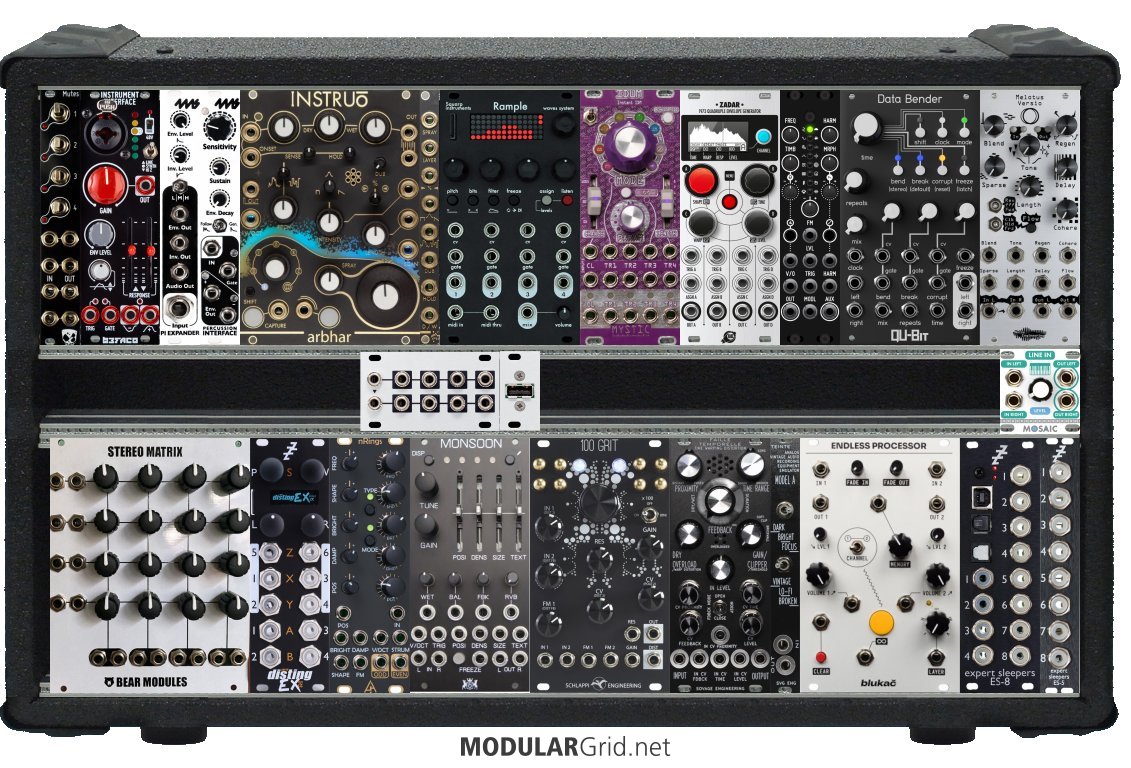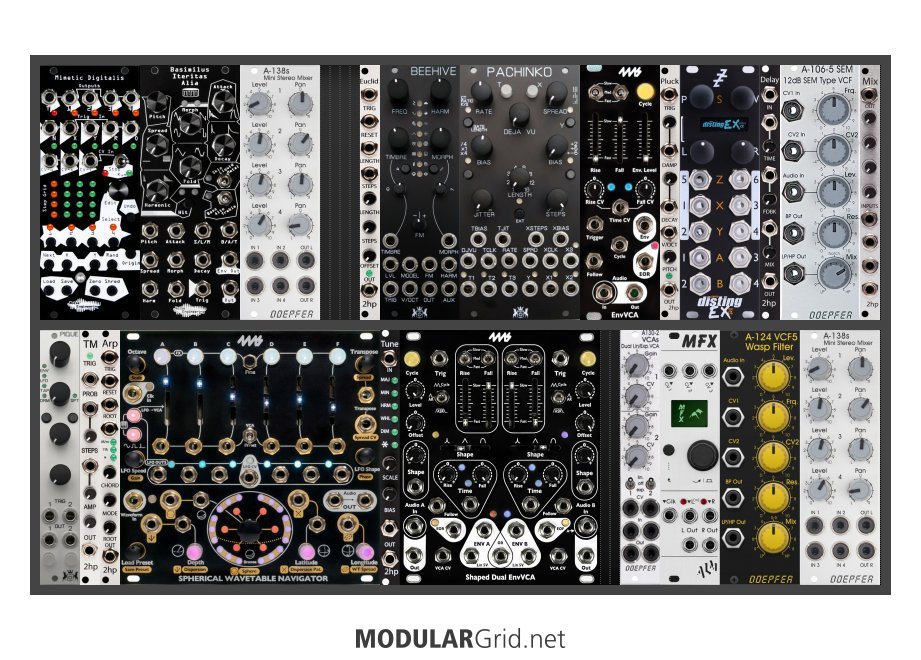Hello there, first post, first rack, at least one I want to talk about and ask for some advice on what could be improved / replaced.
I have an Intellijel 7u performance case and I want to do live (Ambient, glitchy, experimental, noise) around textures, use of samples, or even backing tracks, CC/EQ from Ableton with Es-8, maybe ES-9 ; and use eurorack for live sampling / fxs / treatment, live acoustic instruments with mics.
Got a Blofeld for pads, atmos etc... Doepfer Black Energy II for drones/basses (sequenced via Ableton) and I was thinking about using a turntable with external mobile preamp (Phono In/line Out) to use some concrete noises from vinyls I have through Arbhar. I also have Data Bender ,Monsoon, 100 Grit, Melotous Versio, Faille Temporelle.
I wanted a matrix mixer for maximum versatility, experiments and I think it's a + for live perfs.
As a drummer, I also wanted to implement triggers from hits on a acoustic Low Tom, cymbals, maybe a kick. Or trigger Plaits as a voice or Rample as a sample trigger (in the same key as the backing track or a 808 quantized through Ableton and ES-8).
IDUM is a possibility I though about for the Rample channels unused, that could do idm types of bleeps/bloops/bursts/ratchets.
I want it to be a case for collaborations with any type of (acoustic) musicians too and I feel the Endless Processor is a cool bridge between acoustic sounds and eurorack world.
I feel I may lack modulations/utilities ? I have rooms for 1U as well. (I already have a Line In from Mosaic for turntable/Blofeld)
right now I have a Hermod instead of ES-8 so I still have lfos and other modulation sources but it's overkill with the idea of using Ableton anyways.
I don't have the disting EX yet. Is that a good idea ? Any thoughts on the best fx chains ? best use of Matrix Mixer ?
THANK YOU for reading me, any advice, question are welcomed !






